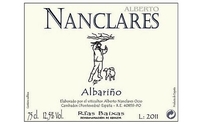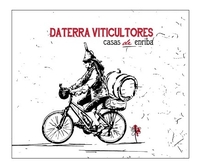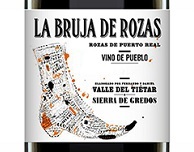|
|
 |
|
November 26, 2021
Rioja is typically at the forefront of Spanish wine understanding and sales. However, I'd like to cast the net further afield and explore a few regions and producers that are awakening Spain’s wine industry. I've rounded up a few of my favorite emerging regions, bottles, and winemakers, as the fun is not only selecting the style of wine you like drinking but also the names you like to drink.
Let's get started in Galicia, in northwestern Spain, just north of Portugal. It includes five wine appellations (Denominacion de Origen, or D.O.): Rias Baixas, Ribeiro, Ribeira Sacra, Valdeorras, and Monterrei. Galicia was long considered the best white wine region in Spain until war and disease contributed to the decline of winemaking traditions in the area. Fortunately, the last several decades have seen winemakers dedicated to revitalizing the region’s indigenous grapes and organic farming. And, while Galicia is home to many of Spain's finest white wines, there are a handful of young winemakers like Laura Lorenzo retraining old Mencía vines and have found great success with the red variety. Lorenzo started Daterra Viticultores in 2014 out of her desire to keep regional traditions and varieties alive. Her wines are a love letter to the distinct terroir of Galicia.
Other winemakers breathing new life into Galicia include dynamic producers Alberto Nanclares and Silvia Prieto. Nanclares and Prieto make age-worthy, saline-tinged wines, mainly with Albariño from old vines around the village of Cambados. The pair cultivate all vines organically and are making some of the best examples of Albariño out there.
Two hundred miles south of Galicia, one-hour drive west of Madrid in Sierra de Gredos, similarly enticing winemaking takes place with Garnacha. Sierra de Gredos is a mountainous wine-growing region gaining attention due to old Garnacha vines planted at elevations ranging between 600 and 1200 meters. The treasure trove of old vines is drawing in newcomer producers like winemaking duo Fernando Garcia and Daniel Gómez Jiménez-Landi. The pair founded Comando G in the Gredos mountains in 2008. The pair make ethereal Garnacha wines with surprising elegance. These are wines that can provide the foundation for an excellent cellar.
What to Drink:
Nanclares y Prieto, Rias Baixas DO (Galicia, Spain) Albariño “Alberto Nanclares” 2018 ($38, Jose Pastor Selections):  Spanish
Albariño at its artisanal best. This saline, citrus-driven Albariño
transmits the terroir of Galicia, full of salted lemon, white peach,
crushed rocks, and fresh cream flavors. It celebrates racy acidity and
textural complexity, and offers a captivating drinking experience. 93 Spanish
Albariño at its artisanal best. This saline, citrus-driven Albariño
transmits the terroir of Galicia, full of salted lemon, white peach,
crushed rocks, and fresh cream flavors. It celebrates racy acidity and
textural complexity, and offers a captivating drinking experience. 93
 Laura Lorenzo Daterra Viticultores, Valdeorras (Galicia, Spain) “Casas De Enriba” 2019 ($34, Jose Pastor Selections): This unique 80/20 blend of Mencía and Godello has captivating aromas of subtle but tremendously expressive floral and red fruit notes. It has a medium body, with well-integrated tannins and flavors of red cherry, strawberry, rhubarb, and allspice wrapped in a rustic package with mouthwatering acidity. This wine over-performs for the price. Stock your cellar to ensure you have a bottle or three on hand! 92 Laura Lorenzo Daterra Viticultores, Valdeorras (Galicia, Spain) “Casas De Enriba” 2019 ($34, Jose Pastor Selections): This unique 80/20 blend of Mencía and Godello has captivating aromas of subtle but tremendously expressive floral and red fruit notes. It has a medium body, with well-integrated tannins and flavors of red cherry, strawberry, rhubarb, and allspice wrapped in a rustic package with mouthwatering acidity. This wine over-performs for the price. Stock your cellar to ensure you have a bottle or three on hand! 92
 Comando G, “La Bruja de Rozas,” Vinos de Madrid Garnacha 2019 ($35, European Cellars): The La Bruja de Rozas (The Witch of Rozas) is extraordinarily aromatic and intensely flavorful, with notes of crushed violets, basil, and black pepper that meet a core of densely layered red and black fruits. The wine is bright and lifted and arguably among the best expressions of the variety. 93 Comando G, “La Bruja de Rozas,” Vinos de Madrid Garnacha 2019 ($35, European Cellars): The La Bruja de Rozas (The Witch of Rozas) is extraordinarily aromatic and intensely flavorful, with notes of crushed violets, basil, and black pepper that meet a core of densely layered red and black fruits. The wine is bright and lifted and arguably among the best expressions of the variety. 93
Posted by Miranda Franco at 4:43 PM
|
|
November 17, 2021
The one thing I know about you for sure is that you read wine websites, and that gives me very good odds of being correct about one other thing: You are probably the most wine-knowledgeable person attending your meal for Thanksgiving, and in turn, that probably means you’re responsible for bringing the wine.
If you plan to take that responsibility seriously, you’d do well to press past the many particular recommendations being offered at the moment to consider why certain wines work much better with this meal than others. Although that may sound like more work than you need right during this busy season, you’ll actually be freed up by learning some pairing principles, as they’ll enable you to select from a very wide range of wines with strong assurance of success.
1) Turkey’s flavor is relatively subtle, so wines with a lot of intensity and power can overwhelm it. Different preparations count, though, such as smoking the bird, but this is still not a meal suited to overly pushy wines.
2) Most households will have wine novices at the table, so intense wines are doubly inadvisable, as are tannic ones. Tannic wines also don’t work well because there’s not a lot of dietary fat in most turkey preparations, even though some people put lots of butter into side dishes like mashed potatoes.
3) Although really big wines don’t make sense with this meal, don’t go too small. Dark meat with gravy is much more robust than white meat without gravy, so quite light wines like Sauvignon Blanc or Pinot Grigio could be overwhelmed. This is a very important factor because some diners much prefer dark or light meat, and these preferences don’t always coincide with preferences for red or white wine.
4) Many households with large gatherings will include guests who much prefer either whites or reds, so including one of each is wise, even if as few as 4 are around the table.
5) Medium body and moderate robustness is the right road to success, and avoiding any characteristics that are sharply prominent (e.g., acidity, wood, sweetness, tannin) is important because of the complexity of the meal.
6) This complexity stems mostly from the side dishes, which matter…a lot. Cranberries are usually tart or sweet or both. Sweet potatoes are … um… sweet. Mashed potatoes are rich. Stuffing is too, almost regardless of the components. Green vegetables can range from pungent to bright. The only wines that can succeed with everything on a typical plate are thus integrated as well as medium bodied and moderately intense.
7) Integration can result from the character of the grape variety (e.g., Pinot Blanc) or from cellar techniques used or eschewed (malolactic fermentation to smooth out acidity, or wood ageing avoided to retain roundness and primary fruit). It can also result from ageing in reds, which softens tannin and leads to absorption of wood notes. However, the wine needs to have started its development with relatively acidity if it is to achieve integration from ageing without losing refreshment value. So, a cool climate Syrah from the northern Rhône can work well, but an aged Shiraz from Australia isn’t a great choice.
8) Although this isn’t a particularly fatty meal, it invariably ends up leaving everyone very full…if not downright comatose from tryptophan. So, successful wines always have some refreshment value, regardless of whether white or red. This is almost always stems from acidity, which in turn is almost always geographically associated with relatively cool climates. So, pick wines from a cool region, or ask a wine consultant in a retail shop to help you do that.
9) To help your guests perk up their appetites (and retain consciousness over the course of the meal), welcome them with very light wine. Sparkling wines make excellent aperitifs on any occasion, and are particularly appropriate for a celebration, but pick light ones. Rosé sparklers can be very good with the meal, but lighter Blanc de Blancs bottles are much better for starters. Regarding other before-dinner drinks, beer is filling and cocktails are befogging (and also enhance the likelihood of family fights). Nevertheless, hospitality requires that we accede to requests…even when based on bad ideas.
10) “Light is Right” holds equally true at the end of the meal. Finishing the dinner with something fresh and relatively light (like Riesling Auslese from Germany) is a better idea than Port, but if the dessert demands, Tawny is a much better choice than LBV or Vintage. However, if you have guests who want a Port or a Cognac after the meal, just be sure to have a sufficient number of guest rooms, couches or air mattresses to accommodate those who keel over.
Happy Thanksgiving from all of us at Wine Review Online!
Posted by Michael Franz at 11:02 AM
|
|
 |
|